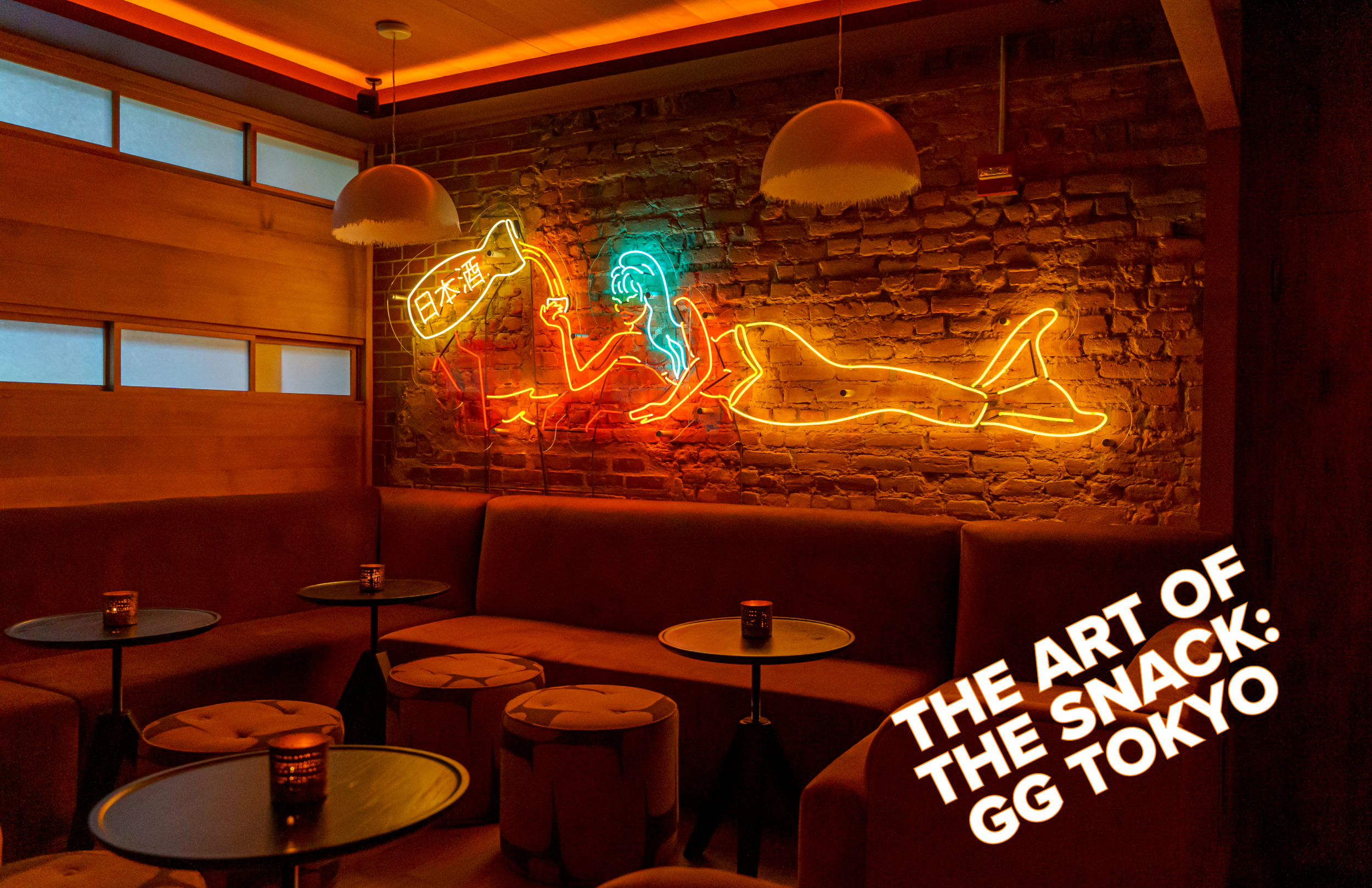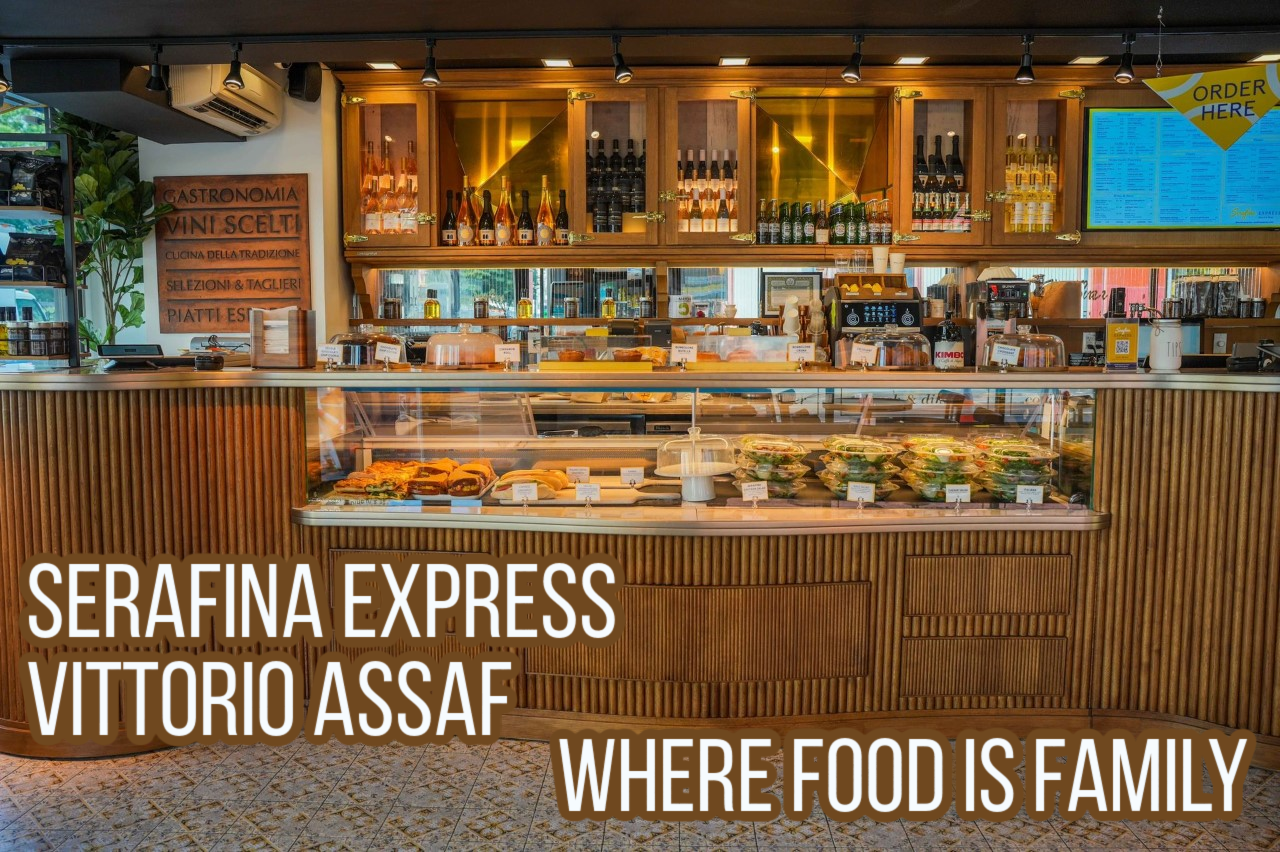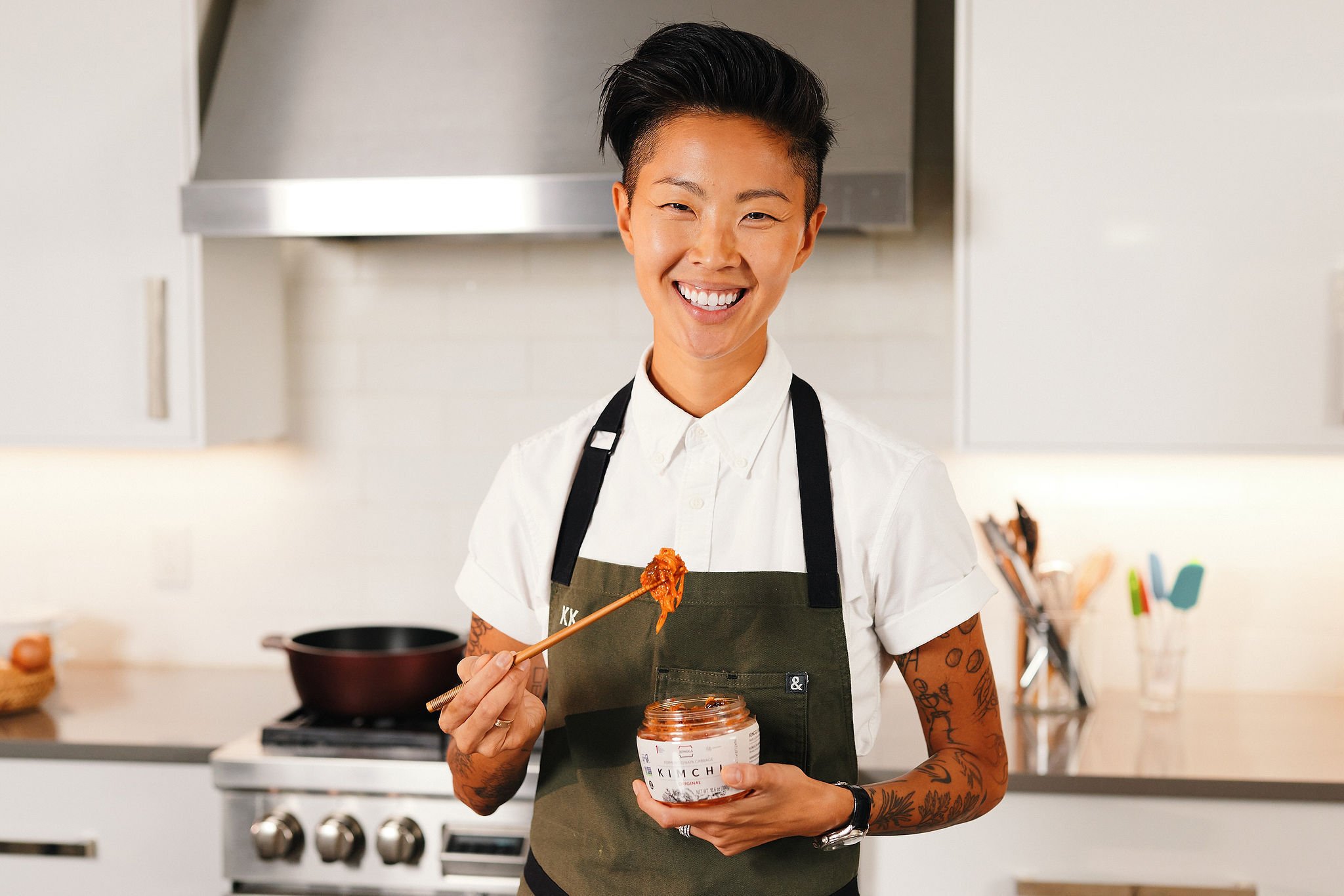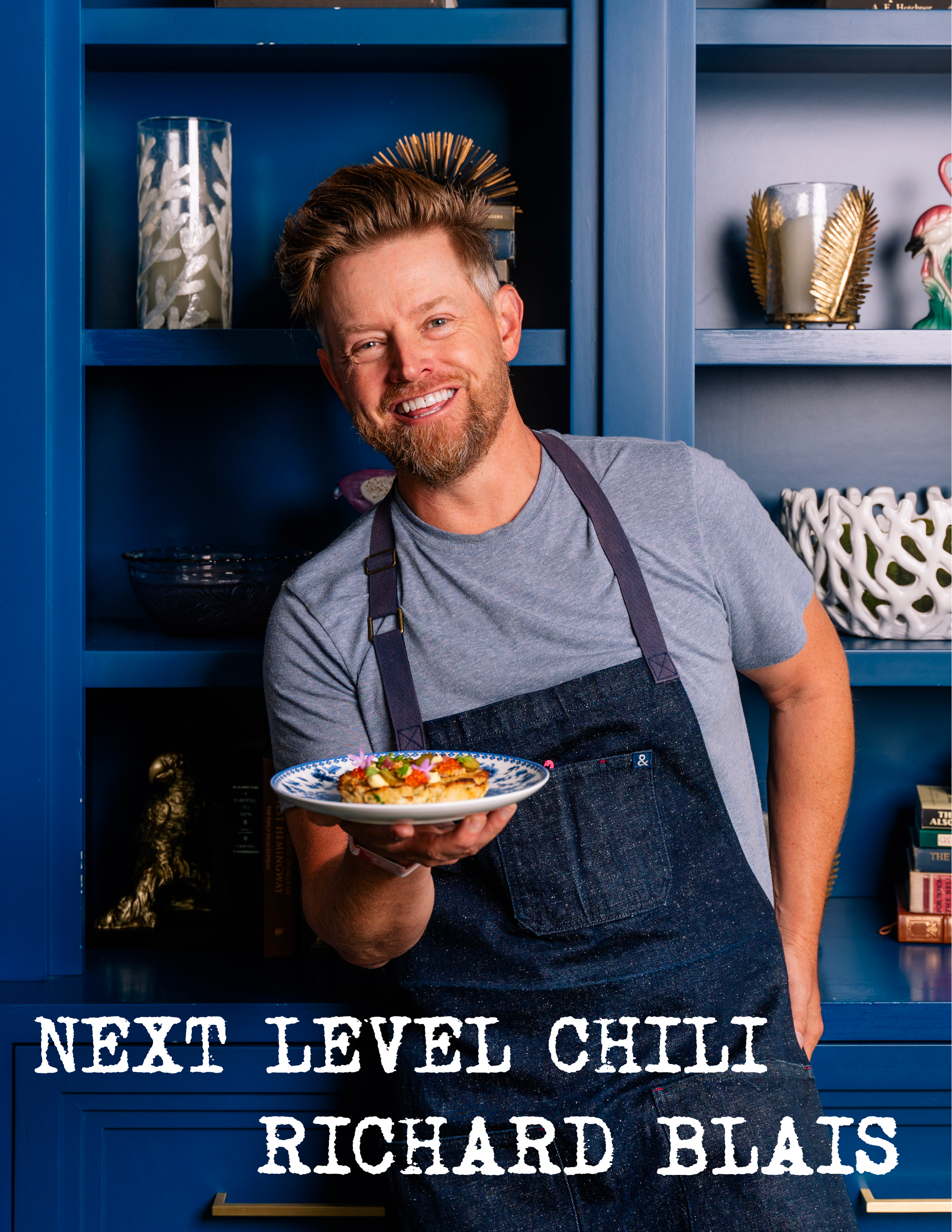AM: I remember watching your IG when you were going to Korea and it was so cool to see how you were connecting. I think that there is a sense of connection that everyone has even if you grew up in American and you grew up with a family that looks like you and as an African American you’re saying I see this, but where are the roots and what does that mean? I think being able to watch you on your journey and for you to share that with everyone was so impactful and beautiful.
CHEF KK: Thank you!
AM: I enjoy eating kimchi on its own or on a salad. But what recipes in terms of integrating it in a different way? I love this dish so much, what else should we be doing with it?
CHEF KK: Honestly, any place that you can impart acid, I say add kimchi and swap it out! Whether that be a burger or you chop it up and thread it through a beautiful carbonara – think about the little bits of acid and heat through something so rich. I created 2 recipes specifically with Jongga Kimchi.
One is a play off of my Midwestern love for potatoes -
AM: Yes! I live in NY but I’m from Indiana originally!
CHEF KK: Yeah! Ok, then you’re going to be right here with me! I love a tater tot!
AM: Oh yes!
CHEF KK: Give me a tater tot in any form! So now we can jazz it up and we can call it a croquette and now we’re in a little fancier background. Then, the love of Korean BBQ and the cheese corn that you get and then mix it up and putting it all together with this smoked mozzarella bechamel that I make and then thread it with corn, potatoes – thread it, fry it – it’s crunchy, cheesy and delicious.
Then the other one is my ode to little hot dogs wrapped in baked croissant dough! We can’t really call that by it’s brand name because it’s not a croissant, but it’s in dough. The love of pigs in a blanket and it’s just so yummy! And I make a kimchi honey mustard using the kimchi brine because we chop up the kimchi to put it inside of the roll and then we use the brine to make the honey mustard and it’s just so good!
AM: The last time that I talked to you, you turned me onto Kewpie which I loved that! Now you’ve turned me onto the fact that I need my tater tots with kimchi on it – check!
How is kimchi made and why is it so important to preserve plant biodiversity?
CHEF KK: I mean, food waste in general, a lot of times in restaurants, we’re always thinking about how we can preserve and how to make things last. How to use the undesirable pieces of different vegetables and meats. It’s something that I have always been very passionate about ever since I have been in the culinary industry and also learning about how to do it. Because a lot of times, you go to culinary school, but they don’t always teach you how to use the end cuts and how to use the things that are less desirable. So it’s important. I think kimchi is important to preserve the history and the culture of kimchi making! I’ve gone on a deep dive on YouTube watching sweet Korean ladies making kimchi and obviously it stems from a place of need and that’s why we do a lot of things and where it stems from when we do the things that we do. It’s out of necessity. Here’s a fact, there is a very high percentage of cabbage that is at risk or has gone extinct in terms of different varietals that are no longer in use or in production or being grown. So the Generation Preservation campaign that Jongga is doing is really focusing on the preserving of the history of the preservation and why we do the things that we do in order to keep sustaining the vegetables and to kind of keep moving things forward.
So, being able to use products like that is really important and of course how you make kimchi! Now there are various versions. There’s cabbage kimchi, there’s other kimchi’s there’s all this food and food has evolved and carries different stories from all of these different kinds of people. But traditional cabbage kimchi is this rice paste flour, Korean chili flakes, lots of aromatics – ginger, garlic all blended into a paste and then you layer it onto these leaves and I think that a lot of the rich tradition is in the process right? Watching how meticulous it is in order to make it and so I think that anyone at home can make kimchi, do I think that there are far better kimchi’s especially those that I can personally make – absolutely! So sometimes, it’s just best to buy it!
AM: My sister just came back from Seoul and I was watching all of her pictures and I was like, I want to eat it from there!
CHEF KK: I mean, I’ve eaten at a lot of Korean restaurants in LA and in NY and those Koreatowns of those specific cities and you know that you can find some really good stuff. But there is something to be said when you sit in a Korean restaurant with a bunch of Korean people and you don’t understand everything – there’s just something that brings it to a whole other level! I have to tell you that things taste different over there in a really beautiful way!
I will say that when you go, you should try and I don’t know if your sister has gone there – Temple Cuisine. I had a temple lunch in the middle of Seoul and it was just tucked away and the atmosphere was amazing. The food was just transformative in the fact that it is uncomplicated and you just know that it is coming from a place – I don’t even have words to describe it because it’s just a feeling and I highly recommend you hitting that up!
AM: Well, if you say it, that’s all I need to hear!
CHEF KK: It’s really really good!
AM: You’re always on the go and you have so many things going on and I have never been to your restaurant in Austin, Arlo Grey but we have plans to be there next Spring so that we can check it out for ourselves. Are there projects that you’re working on that you’re able to share that we can keep an eye out for?
CHEF KK: Yes! Obviously, we have Restaurants at the End of the World which is coming out and is huge and amazing. And the restaurant – please, please come visit! Parallel to kimchi I have a line of Soju coming out, which is Korean alcohol. I love your reaction, that's a great reaction! A lot of Soju is like ahahah harsh so I’m doing a line of 4 aperitifs with lots of great storytelling and a lot of good stuff and good flavor in it. Keep an eye out for that so grab some Jongga Kimchi and get my new Soju and have a grand old time!
AM: We enjoyed talking with Chef Kristen Kish about her recipes and as we enjoy a great tater tot or croquette, here is how you can make your own with Jongga Kimchi!
JONGGA KIMCHI CREAMED CORN CROQUETTE
PRODUCT | Jongga Napa Cabbage Kimchi
SERVES | 30 - 40 2oz croquettes
PREP TIME | 60 minutes
TOTAL TIME | 1 hour, 30 minutes
INGREDIENTS
FOR THE CROQUETTE
• 2 pounds russet potatoes
• 3 cups of fresh corn kernels (approx. 3 small ears)
• Smoked mozzarella Mornay (see recipe below)
• 2 cups Jongga Kimchi – squeezed dry and finely chopped, reserve 3 tablespoons of Jongga Kimchi juice
• Salt to taste
• Vegetable oil or frying oil as needed
• 1 large Black Truffle as desired/needed
• Celery leaves, lemon, Maldon Salt and chives to garnish
FOR THE SMOKED MOZZARELLA MORNAY
• 3 tablespoons unsalted butter
• 3 tablespoons all purpose flour
• 3 sprigs thyme
• 2 large cloves garlic – peeled and gently smashed
• 1 teaspoon whole black peppercorns
• 1 small shallot – peeled and small diced
• 1¼ cup whole milk
• 1 teaspoon kosher salt
• 6 ounces smoked mozzarella – cut into small cubes/pieces small cubes/pieces
BREADING STATION
• 2 - 4 cups panko – crushed with your hands and mixed with ½ teaspoon kosher salt
• 4 eggs – beaten and mixed with ½ teaspoon kosher salt
• 1 cup all-purpose flour, mixed with 1 teaspoon gochutgaru, ½ teaspoon dried thyme and ½ teaspoon kosher salt
INSTRUCTIONS
FOR THE SMOKED MOZZARELLA MORNAY
1. In a medium saucepan add the butter, flour, thyme, garlic, peppercorns, and shallot.
2. Turn on heat to medium and allow the butter and flour to come together, forming a blond roux.
3. Slowly whisk in the whole milk and allow mixture to come to a simmer, scraping down the sides and stirring frequently. Mixture will thicken.
4. Add in the cheese 1/3 at a time, stirring to incorporate.
5. Once cheese is fully melted, turn off heat and transfer into a wide shallow container, placing plastic wrap directly over the sauce.
6. Refrigerate until the sauce is room temp or chilled to the touch.
FOR THE CROQUETTE
1. Bake potatoes at 400°F for about an hour or until tender.
2. Remove from oven and let cool enough to handle.
3. Remove the skin and gently fork mash the potatoes while still hot, set aside to cool.
4. Mix together the room temperature or cooled cheese sauce with the corn kernels.
5. Add the kimchi, potatoes, and kimchi juice.
6. Mix until incorporated and season with salt to taste.
7. Form into 2 oz discs, larger or smaller depending on preference.
8. Freeze until firm (optional but makes it easier)
9. Working in batches, dredge each croquette in the flour mixture (be sure to tap off excess before moving on) then in the egg mixture, then in the panko mixture.
10. Deep fry in 350 – 370°F vegetable oil.
11. Garnish with celery leaves tossed in lemon juice, chives, Maldon Salt and lots of shaved black truffles.
12. Serve immediately.
IG @kristenlkish
@jongga_global
PHOTOGRAPHY COURTESY | Kristen Kish



























































